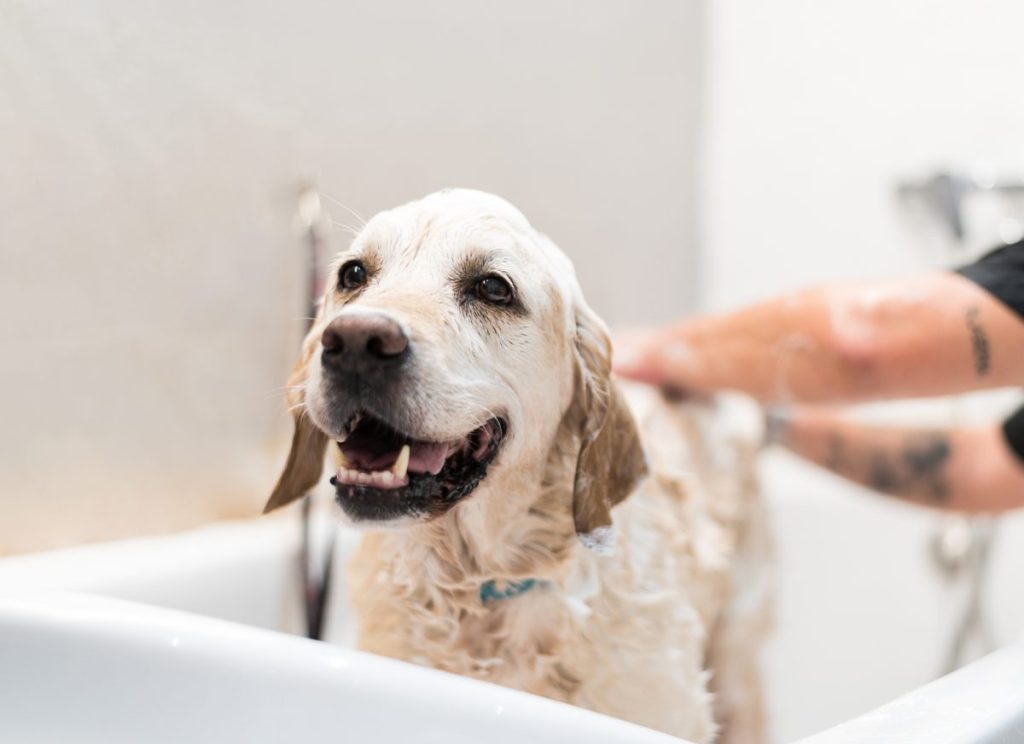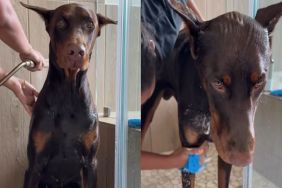Most dogs would rather skip bath time, but bathing your dog plays an important role in the health of their coat and skin. Baths keep your dog clean and free of dirt and parasites. And, of course, there’s the added benefit of making your pooch more pleasant to be around.
Here are a few frequently-asked questions and answers about giving dogs baths that should help you get started. As always, ask your vet about your pooch’s needs before you begin!
How often should I bathe my dog
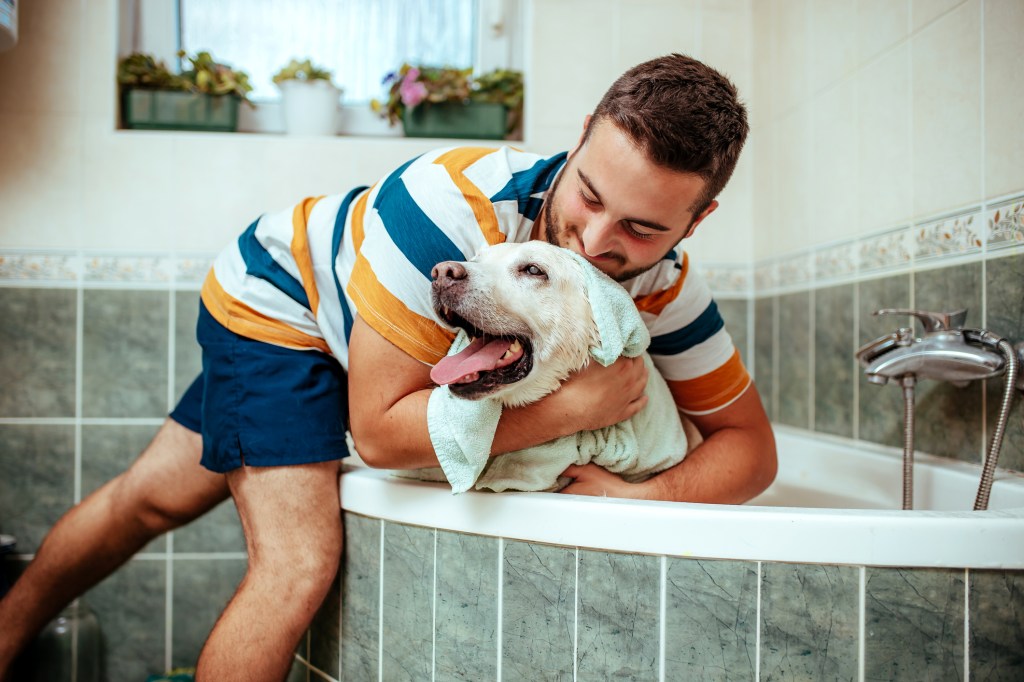
While dogs don’t require daily scrub-downs like we do, they do need regular baths — but just how regular depends on several factors, such as the dog’s environment and type of coat.
Your veterinarian can give you advice on how much bathing is appropriate for your individual dog.
Here are some general guidelines:
- Bathing once a month works for most dogs.
- Dogs with oily coats, like Basset Hounds, may need bathing as frequently as once a week.
- Many short-haired breeds with smooth coats, such as Beagles and Weimaraners, do just fine with less frequent baths. Short-coated Basenjis are fastidious in their personal hygiene and rarely need a bath.
- Breeds with water-repellent coats, such as Golden Retrievers and Great Pyrenees, should be bathed less often so as to preserve their natural oils.
- Dogs with thick, double coats, such as Samoyeds, Malamutes, and other Northern breeds do best with fewer baths and a lot of extra brushing, which gets rid of loose, dead hair and helps distribute natural oils that keep your dog’s skin and coat healthy.
Of course, if your dog likes to go swimming, is obsessed with mud puddles, or lives in the country and does a lot of rolling in who-knows-what, then you may want to bathe more frequently than if that same dog lived in a condo in the ‘burbs.
That said, avoid bathing more often than truly necessary, or you’ll strip your dog’s coat of its natural oils, making it dry and more prone to dandruff, frizzies, and mats. Some shampoos may dry or irritate the dog’s skin more than others, in which case you should bathe less often or try a different shampoo.
Basically, the best way to gauge when your dog needs a bath is to give them a good sniff. How do they smell to you? Not so good? Start running the water.
Where should I wash my dog
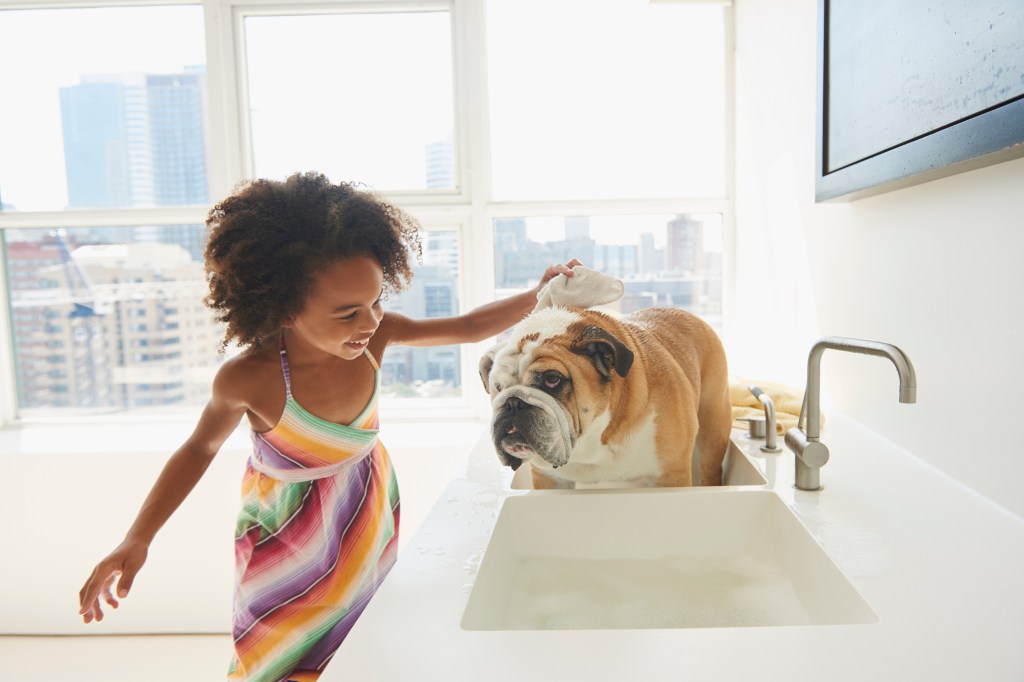
Parents of small dogs have an advantage; they can just plop the dog in a sink or laundry tub. But if you can’t fit your dog in a sink, then you’ll probably have to use the bathtub or get in the shower with them and use a detachable nozzle.
A portable doggy tub is also an option. While some tubs are made of heavy plastic, others are collapsible and can easily be used outside or in the laundry room or mudroom. Some grooming or pet supply stores rent out dog tubs and towels.
Using a garden hose is okay if the dog is truly filthy and the weather’s good, but make it an occasional experience. Dogs don’t like being cold any more than we do, and many don’t like having a hose shot at them.
How should I give my dog a bath
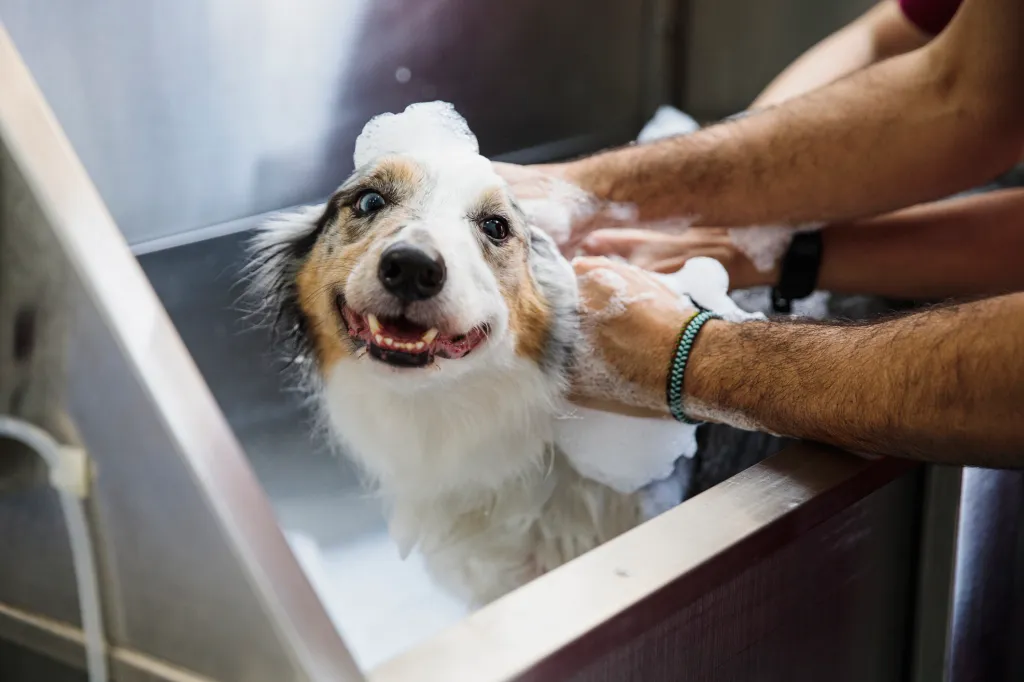
Once you’re prepared to take on the task — with or without your dog’s cooperation — here’s what to do:
- Brush your dog before a bath. Matted hair holds water, leaving your dog with irritated skin. If you can’t brush or cut the mats out yourself, take your dog to a professional groomer.
- Use lukewarm water. Dog skin is different from ours, and hot water can burn dogs more easily. Bath water should never be hotter than what you’d run for a human baby. Keep it even cooler for large-breed dogs who can easily overheat.
- Talk to your pet in a calm and reassuring voice. Some dogs will eventually learn that you’re not torturing them, although others will continue to hide under the kitchen table whenever you get out a towel.
- Use dog shampoo. It dries their skin less than people shampoo. Work the shampoo into a gentle lather and massage it all over your dog’s body, being careful not to get soap in their eyes.
- Rinse well. Any soap left in their fur can irritate your dog’s skin once they’re dry. Rinse, rinse, and repeat the rinse.
- Air-dry. Hot air from a human blow-dryer can be too hot for your dog’s skin. Either air-dry or use a blow-dryer designed for dogs; its lower temperatures won’t cause itching or dandruff.
- Reward your dog. Follow up with abundant praise, petting, or play. Damp dogs love to vent their frustration over bath time by playing exuberant tug-of-war with the bath towel — or just running away with it — when it’s all over.
When Should I Go With The Pros
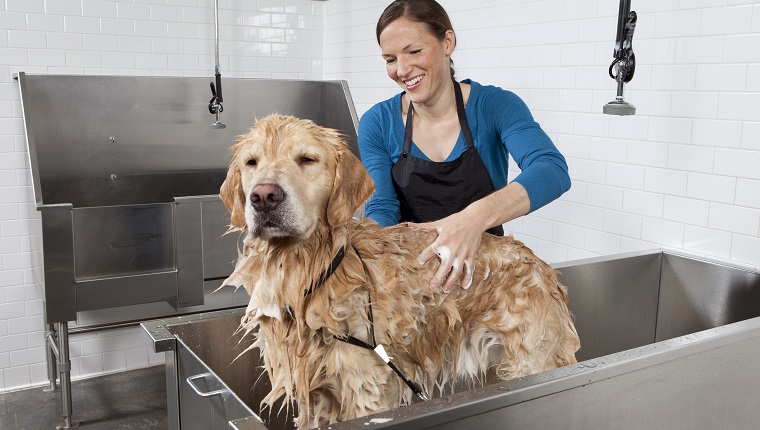
If the idea of wrestling your dog into a bathtub and expecting them to quietly tolerate being lathered and rinsed makes you laugh hysterically, then do what many opt for: take your dog to someone who makes bathing dogs their business.
Groomers will not only bathe your dog, but they’ll clip their nails, express anal sacs upon request, trim near the eyes, and dry them off. Most are priced reasonably.
Professional dog groomers are a must for certain breeds, such as Poodles, Yorkies, Maltese, Springers, and others with hair that grows long. Unlike fur, hair doesn’t shed as much, and it will keep growing until it gets cut — just like yours.
Even if your dog has fur instead of hair, groomers are helpful if your dog deeply hates baths. They’ve got lots of tried-and-true techniques for making even the most bath-averse canine behave.
